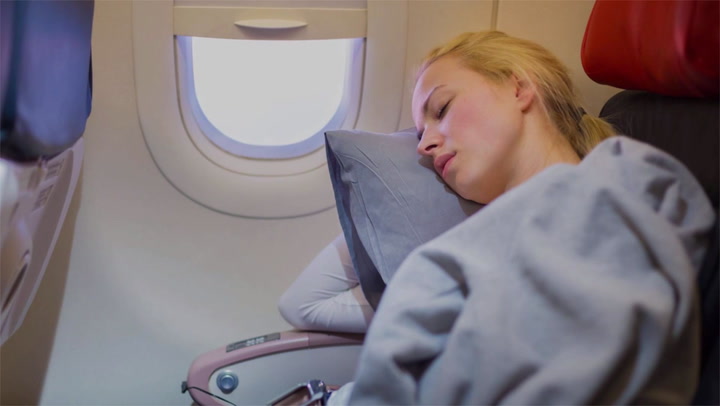Getting good sleep on a plane can be difficult — but not impossible.
Fact checked by
Perhaps no traveler’s quest is as quixotic as the one for a full night’s sleep in economy on a long-haul flight.
There are countless products geared towards helping people sleep while they’re basically upright — but between other passengers, turbulence, and uncomfortable seating, it can feel like there’s no way to fall into deep, restorative sleep in transit.
Good sleep on a plane may be elusive, but it’s not impossible. With a bit of preparation, travelers can bring the comfort of their beds with them on the road. Here are our tips for helping travelers get restful sleep on long-haul, international flights.
1. Pick the right seat.
Not every seat presents an equal opportunity for sleeping. The best option for most normal sleepers tends to be the window seats. Moreover, this eliminates any interruptions from other passengers, and the walls of the plane provide excellent support for the neck.
Individuals who are restless sleepers or often make trips to the bathroom in the middle of the night should consider getting an aisle seat for easy access in and out.
Light sleepers should avoid booking seats in the front of economy class. Airlines tend to book families, especially those with infants, around this part of the plane, making it likely to be woken up by noise.
Additionally, seats near the exit rows tend to be colder as air can leak in. While some travelers may prefer to sleep in a cold environment, being stuck in one of these seats without a blanket can make for a fitful few hours.
2. Pack a sleeping kit.
Having familiar smells and feels around may help travelers fall asleep and stay asleep more quickly. It’s essential to create a comfortable environment for rest.
Whether travelers pack a pair of noise-canceling headphones or just some earbuds, sleep specialists recommend unplugging from distractions as soon as it’s time to sleep. A 90-minute playlist of white noise, or earplugs, can provide sufficient noise cancellation to help travelers stay asleep during flights.
A small vial of a signature sleep scent can also be beneficial. When at home, using this scent in the bedroom can create a mental association with sleep. While on the plane, putting a few drops on a travel pillow allows the familiar scent to signal it’s time to wind down. Additionally, a familiar blanket brought from home may provide comforting cues for the body.
Always pack an eye mask to block out light in case it turns on during the flight.
3. Don’t knock yourself out.
While alcohol may help travelers fall asleep faster, it often limits the quality of sleep later in the night. Alcohol can disrupt the brain’s functions and block REM sleep, meaning that the sleep passengers do get is not restorative. Consequently, waking up with a hangover on a plane can be particularly unpleasant.
As for taking sleeping pills on a plane, self-administration is not advised. Some medications, like Ambien, may lead to sleepwalking or erratic behavior without the user’s awareness.
However, melatonin pills — especially valuable for travelers crossing multiple time zones — could be a helpful aid. One milligram is generally sufficient. Taking it about 30 minutes to one hour before sleep can promote restfulness. After landing, staying awake throughout the day without taking a nap is crucial for adjusting to the new time zone.
Continuing melatonin for two to three days after arrival can also be beneficial for acclimatization.
